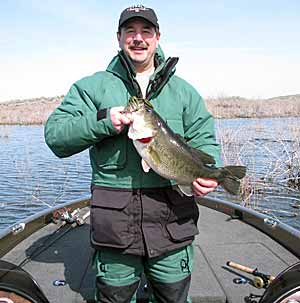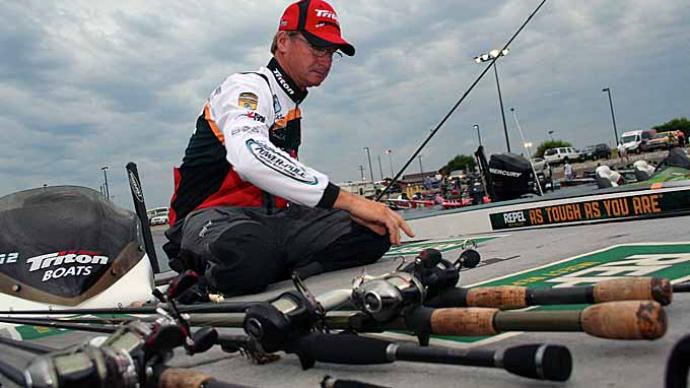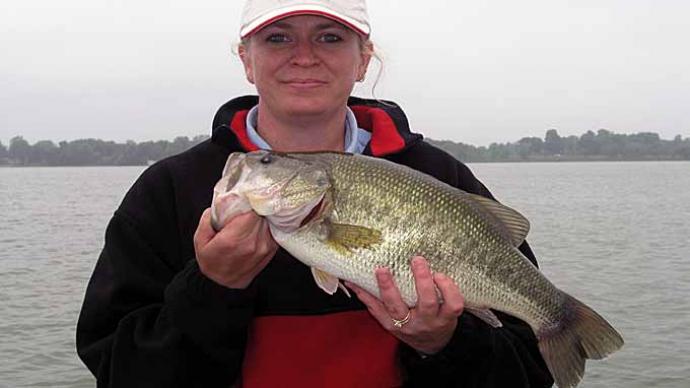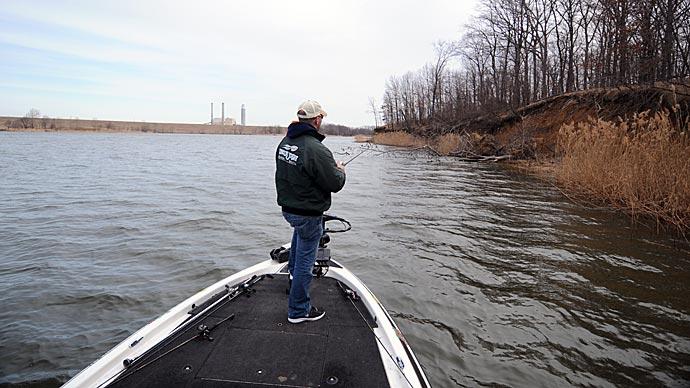
Early winter can be a very frustrating time of year for trophy largemouth bass or it can be the most exciting time of year. If you fish the right lake, at the right time, you can have the best bass fishing of your life, and good enough to count for someone else's life too.
I have taken a survey on the Internet of the top five best bass lures, then matched it with the right techniques you need to be successful this time of year. As always, good luck and don't forget, bass don't get big if you keep them...Now, the voted top five best largemouth bass lures for early winter and how to fish them.
Spinnerbait
Excellent Choice this for this time of year, best when fished in 3- to 7-feet of water. Bright colors such as orange, white, and chartreuse produce best in murky water conditions and translucent colors such as light gray generate best in clear water.
Using a slow retrieve this time of year due to the decreasing water temperature is a common tactic. On the other hand, make sure to always let the bass tell you what speed they prefer, vary retrieves until you catch a few. Adding twitches with the rod tip for a reaction strike can be a useful method as well. If you are attracting tentative bass that are short striking, experiment with a trailer hook.
Spinnerbaits most commonly produce best when fished around cover like logs, stumps, lily pads, salad bars and a top producer, downed trees. So far this year, I have landed four bass between 5.8-6.9 pounds, ending up with ten bass over 3.8 pounds in October. The most recent whopper was a 21.5 inch largemouth Halloween morning caught on tandem Colorado white spinnerbait in two feet of water. Now that's exciting!
Jig and Pig
Black/blue is the best color for this lure in off colored water. Considering off colored water is about the only color you'll find this time of year with all the rain. Black and brown are excellent choices as well.
Most anglers tie on this bait during a cold front when the bass have buried themselves in cover. Many anglers use it as a "go-to" bait when they can't buy a bite with any other lure.
Make sure to fish this bait slow this time of the year. Flip or pitch between 5- to 15-feet around dense cover such as thick weeds, logs, and downed trees. Once it settles to the bottom, utilize the rattle (always have a rattle on your jig) by lightly shaking the jig to make fish aware of its presence. Hop the jig four to five times delaying about five seconds between movements and pitch again. Work it into stump roots, and drop it so it penetrates into thick weeds. Once you feel the lure brush against cover, shake the rod tip to exploit your rattle to attract curiosity from a nearby bass.
I highly recommend that you use Stren clear-blue or any other high visibility line to detect sudden line twitches. The high visibility line allows you to see any suspicious line movements. If you should see or feel anything strange, different, or out of the ordinary, set the hook immediately.
Floating Rapalas
This is well known top producer this time of year. The bass are in the shallows looking for an easy meal to start the winter. They do not want to chase a meal too far where they begin to tire. Rather they prefer an easy-to-eat bait such as a dying minnow.
A rainbow trout colored Rapala twitched next to dying lily pads is a deadly method. Make a cast next to cover or towards the shoreline, twitch it underwater and allow it to float to the surface. Make about five twitches and then bring it in like a crankbait, jerking it underwater back to the boat.
Do not set the hook very hard, it's easy to jerk too quick and take the bait out of its mouth. Wait until the splash is gone to assure yourself a solid hook set.
7 inch Power worm
This is a great weapon to have in your arsenal this time of year. The most common size is a 6-inch worm, yet a 4-inch can be just as effective. Texas or Carolina rigged (18'' between hook and swivel) worms will produce year round. Ideal when working drop-offs and breaklines.
Cast out to structure and let it settle to the bottom. Hop it slowly such as a jig, in-between hops shake the rod tip to allow the brass and glass combination to make noise and possibly attract a fish from nearby dense cover. Keep your rod tip high to detect light bites, be ready to set the hook at any moment.
It's also extremely effective under docks and around logs and various underwater structure and cover. Make sure you always use glass with brass weights. Vary the size of your brass weights depending on the size of worm and depth of water you are fishing.
Rat-L-Trap
This lure is ideal this time of year as well, mainly for big bass. It is extremely noisy and attracts bass from a distant cover and structure. It's best when used in depths ranging from 6-inches to 10-feet deep.
Retrieve it just fast enough to stay a little above the weedline, or bottom. Give it sudden twitches for maximum sound. This lure can cause a reaction from a big bass holding next to cover. Run this bait parallel to docks and lily pad edges. You can even run it down the side of a log. Keep your rod tip in the air. Don't set the hook too hard as a worm or jig - they'll usually hook themselves. I recommend you change the factory hooks with larger hooks the day you buy the bait. Big mouths require big hooks.




